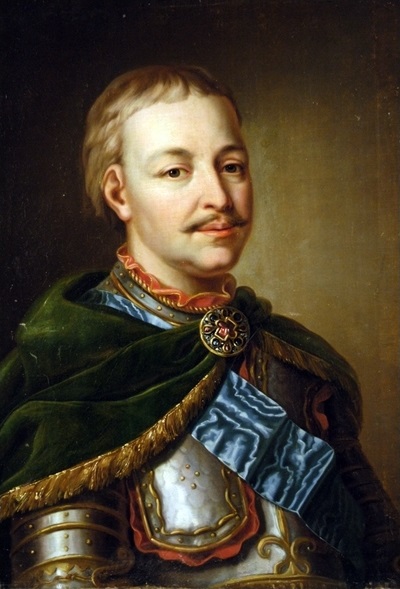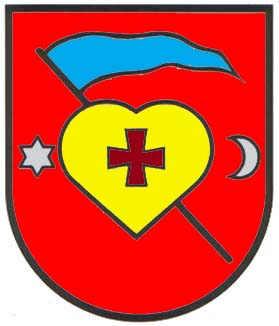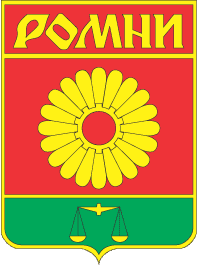Charles in Russia
 |
| Convent of St Nicholas, Mogilev |
The road to Mogilev was a desolate
wasteland; on 9th July the Swedes reached the Dneiper[i]. The Swedish engineers
laid bridges over the river, but Charles failed to cross. He was waiting for
additional forces to join them from Riga. The army waited for a month, but the
forces under Adam Lewenhaupt were delayed by bad weather and the
poor Russian road system. Lewenhaupt’s men were travelling about five miles a
day and the army on the Dnieper was still waiting for its reinforcements in
September.
The
unscheduled wait meant that the grass was eaten down to the ground by the
horses. Charles, restless at the lack of action, decided now that he would assume
the offensive. He determined to abandon the planned attack on Moscow and to
force the Russian forces to battle closer to hand. The Swedes crossed the
Dnieper over a period of four days commencing 5th August.
The Swedes
came upon a force of Menshikov’s cavalry, backed by artillery. The two armies
camped close to one another and there were a number of small skirmishes between
them. The Swedes were in two camps and one was attacked in the early hours of
30th August. The Russians withdrew and the following Charles
proffered battle only to find that the Russians had withdrawn.
Although
only a minor engagement, it was the first time the Russians had taken the
initiative and won. Peter was ecstatic.
‘I have never seen such fire
or such orderly conduct on the part of our soldiers. The Swedish King himself
had not seen such an action in the course of this war. O God, do not take your
mercy from us for the future.’[ii]
The Swedes
resumed their march and on 11th September reached Tatarsk. From here
Charles could see the surrounding lands burn bright red as the Russians
devastated their lands. The food supplies were running low and the Cossacks and
Kalmucks roamed alongside the marchers, picking off stragglers.
‘General Levenhaup, who was
appointed to bring him [Charles] a supply , with a addition of fifteen thousand
men, was not yet come up; he therefore resolved to quit the road to Moscow, and
turn to the south towards Ukrainia, into the country of the Cosaques, situated
between the lesser Tartary, Poland and Moscovy.’[iii]
It was
decided to march into the rich lands of Severia[iv], in the utmost secrecy, to arrive
before the Russians could follow their scorched earth policy that was causing the
army such problems.
Disaster
Lewenhaupt
Lewenhaupt
reached the Dnieper on 18th September; his 12,500 men exhausted from
their march from Riga. As ordered Lewenhaupt’s force crossed the river on 23rd
September and almost immediately realised that a Russian force was set to
oppose them. Peter had decided that the time had come to intercept what was
effectively a wagon train. He had 14,625 men under his command[v].
Lewenhaupt
decided to stand and fight. On the 28th September battle was joined
and raged until night time, when an early fall of snow brought the fight to a
halt. A retreat was ordered and the wagons, dragged 500 miles from Riga, were
burned. The infantry rode off on the wagon horses towards the river and Proiposk;
many of the soldiers melted into the forest[vi]. They arrived to find the
bridges burned and were attacked by Cossacks and Kalmucks. The result was a
Swedish disaster; of the 12,000 troops engaged over half were lost.
Lewenhaupt
and his men left the battlefield on the road to Severia. He joined Charles ten
days later, without the much needed supplies and with six thousand exhausted
and nearly starving men, who were used to plug gaps in the main army.
Peter was
overjoyed at this first real victory over the Swedes,
‘This victory may be called
our first, for we have never had one like it over regular troops and then with
numbers inferior to those of the enemy[vii].
Truly it was the cause of all the good fortune of Russia.’[viii]
A
diversionary attack on St Petersburg was also foiled; again the countryside was
laid waste, to stop the enemy provisioning his army. This expeditionary force
lost 3,000 men.
Mazeppa
Mazeppa
On 27th
October Peter received a message that was to overset his pleasure in his army’s
victories. The Hetman of the Ukrainian Cossacks, Ivan Mazeppa, who had been loyal to the Russian cause for over twenty
years, was now allied with Charles.
‘One day as he [Mazeppa] sat
at table with the Czar at Moscow, the Emperor proposed to him to discipline the
Cosaques, and render those people more dependent………….[Mazeppa] laid the scheme
of a revolt. The Swedish army, which soon appeared after on the frontiers,
opened him an easy way to it.’[ix]
Mazeppa[x] was caught between the
Russians and the Turks and dreamed of independence. His control of his peoples
was aided by his support of Peter, who in turn supported him. But Mazeppa, an
arch-conservative, was frightened by the changes that Peter was introducing.
And the appearance of Charles was seen as a godsend by Mazeppa, who had been in
secret touch with Peter’s enemies for about three years.
Charles
agreed to stay out of the Ukraine if possible to spare it the horrors of war,
but he did not promise the independence that Mazeppa craved. So Charles’s
arrival in his homeland was not what Mazeppa was expecting. He had assumed that
Peter would be unseated from his throne by the promised march on Moscow,.
In the
summer Peter had ordered Mazeppa to march his Cossacks against Charles and his
army. At that time Mazeppa had pleaded that he needed to stay in the Ukraine to
hold it for Peter as Peter recognised;
‘His great value is in
keeping his own people in check, rather than in the war.’[xi]
Now Mazeppa
threw his lot in with the Swedes.
Seal of Baturin
Having been
told that Mazeppa was on his ‘deathbed’ Peter sent Menshikov to meet with him.
Mazeppa left his capital of Baturin
and headed off to meet with Charles. When Menshikov arrived to find entrance to
the town forbidden and learned that Mazeppa had ridden off with 2,000 men, he
immediately informed Peter who was with Sheremetev’s army.
Peter
ordered that any attempts by Cossacks to join Charles were to be blocked and
that Baturin be taken. He appealed to the Cossacks, as his co-religionists, to
stay allied to Russia, claiming that Mazeppa was planning
‘To put the land of Little
Russia [the Ukraine] as before under the dominion of Poland and to turn the
churches and monasteries over to the Catholics.’[xii]
Peter
offered rewards for the capture of Swedes, who were racing to get to Baturin
and its stores before Menshikov’s reinforcements arrived. On November 3rd
Menshikov’s troops stormed Baturin, but he did not have sufficient troops to
withstand a joint siege of Charles’s and Mazeppa’s men; accordingly Baturin was
razed to the ground.
The Metropolitan of Kiev[xiii] excommunicated Mazeppa
in a ceremony that was repeated across Russia. This effectively divided the
Ukrainians into the minority who supported Mazeppa and the majority who
supported Peter[xiv].
The Ukrainians hid their horses and supplies from the Swedes and turned over
prisoners for the promised rewards. Peter was delighted.
‘The people of Little Russia
stands with God’s help more firmly than was possible to expect. The King
[Charles] sends enticing proclamations, but the people remain faithful and
bring in the King’s letters.’[xv]
Mazeppa was
now bound by defeat to Charles, whose army was surrounded by a hostile
population and was desperately short of supplies.
Winter
Seal of Romny
On Mazeppa’s
advice the Swedes made their winter quarters in Romny[xvi], where there was plenty
of forage for the horses and crops to sustain the army. Peter established his
headquarters at Lebedin[xvii], distributing his
forces so as to block any route to Moscow. The Russian forces continually
harassed the Swedes.
The Russians
would draw up in battle ready positions and, when the Swedes mustered and moved
out to engage with the enemy, the Russians would then withdraw. Charles, always
one for going on the offensive, was infuriated by these tactics. When the
Russians attacked Gadyach
Charles determined, against the advice of his senior staff, to go to the rescue
of his forces there.
Seal of Gadyach
The Russians
kept up their attack on Gadyach until the Swedes were a bare half hour away then
melted into the countryside. In the meantime the Russians occupied Romny with
little difficulty. Charles’ men were strung out on the road between Romny and
Gadyach at precisely the wrong time of year.
Winter
struck; it was the worst winter in living memory; elk and moose froze to death
in the forests, the Baltic froze and the Danes were able to drive heavily laden
wagons over to Sweden. Even further south the canals of Venice froze, the Seine
froze in Paris and even the mouth of the Tagus was sheeted in ice. In France
Louis XIV’s sister-in-law wrote
‘People are dying of the
cold like flies. The windmill sails are frozen in their sockets, no corn can be
ground, and thus many people are dying of starvation.’[xviii]
Arriving at
Gadyach the Swedish army was impeded by the town’s narrow gates and many
soldiers froze to death waiting to enter. Over 3,000 Swedes froze to death,
those escaping this fate suffered from frostbite. Despite the suffering of his
men Charles was still determined to take the initiative; infuriated by the loss
of Romny he decided to take a strongly fortified Russian position about eight
miles from Gadyach. After a severe barrage lasting most of the day the
commander offered an honourable surrender, which Charles accepted.
In late
winter Charles mounted a limited offensive, moving towards Kharkov. On 29th
January Charles attacked Menshikov’s troops in Oposhnya; Menshikov
escaped but his seven dragoon regiments were driven out of the town and only the
snow stopped the Swedes chasing after the retreating Russians.
Charles’
offensive was halted in mid-February by a thaw, which saw his soldiers up to
their knees in mud. Charles was forced to fall back on Oposhnya. In March the
ground hardened again and the Swedes advanced towards Poltova.
Bibliography
Natasha’s
Dance – Orlando Figes, Penguin Books Ltd 2002
Russia and
the Russians – Geoffrey Hosking, The Penguin Press 2001
Peter the
Great – Robert K Massie, Abacus 1992
The History
of Charles XII of Sweden – Mr de Voltaire, C Davis & A Lyon 1732
www.wikipedia.en
[i]
The then border of Russia
[ii]
Peter the Great - Massie
[iii]
The History of Charles XII of Sweden – Voltaire
[iv]
Northern Ukraine
[v]
Peter had recently set up a highly mobile ‘flying corps’ of 11,625 men under
his direct command
[vi]
Circa 1,000 made it back to Riga
[vii]
The Russians believed that they had fewer troops on the ground than the
Swedish, although it was roughly 50/50
[viii]
Peter the Great - Massie
[ix]
The History of Charles XII of Sweden – Voltaire
[x]
Born in Polish controlled Podolia, west of the Dnieper, he had been chosen as
Hetman to replace the Hetman deposed after Vasily Golitsyn’s unsuccessful
attempts to fight the Tartars. He was one of the first to declare for Peter in
his bid to set Sophia aside.
[xi]
Peter the Great - Massie
[xii]
Ibid
[xiii]
Ioasaph Krakovsky, 1708–1718
[xiv]
The show of force razing Baturin to the ground proved to the Ukrainians just
who was the greater power and danger; Sweden or Russia.
[xv]
Peter the Great - Massie
[xvi]
Between Kiev and Kharkov
[xvii]
In north-east Ukraine
[xviii]
Peter the Great - Massie





No comments:
Post a Comment
Note: only a member of this blog may post a comment.